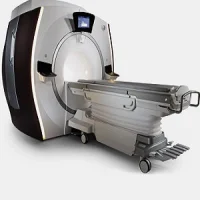Patient satisfaction with radiologists appears to improve when the physicians did not attend one of the top 50 medical schools, according to Luke Ginocchio, MD, who presented a study that analysed ratings of radiologists on the website RateMDs.
Ginocchio acknowledged the study’s limitations but said this was a trend that was noticeable. Their study analysed all identified radiologists on the website with at least one patient review who practice in all 297 U.S. cities with a population of over 100,000. This resulted in 1,891 patient reviews for 1,259 unique radiologists.
Each review included ratings of 1-5 (least to highest satisfaction) in four categories (staff, punctuality, knowledge, helpfulness), and two additional composite scores were developed for facilities on staff and punctuality and for radiologists on knowledge and helpfulness. For Medicare-participating radiologists, group practice size and years in practice were obtained from the Physician Compare database. In addition, the researchers assessed common words occurring in both positive and negative reviews in the free-text comments.
Interestingly, noted Ginocchio, for all 4 categories, the most common score was 5 for excellent, and the second most common score was 1 for terrible. In positive reviews, the most common individual words were “caring”, “knowledgeable” and “professional”. “Rude”, “pain” and “unprofessional” came up most in the negative reviews.
Analysis showed that the radiologist accounted for 30% of total variation in the average score across patient reviews. The Northeast scored significantly lower than other U.S. regions in average scores for staff (p<0.001) and punctuality (p<0.001). Scores across categories were highly correlated, suggesting a halo effect influencing patients’ global perceptions of radiologists. Ginocchio said that radiologists should recognise the importance of office/staff-related as well as radiologist-related factors in impacting patients’ impressions and public ratings.
Radiologists may want to consider personally apologising to patients for any delays, he said. They should take additional action to increase their visibility and take care in securing service-oriented staff in light of the positive or negative impression they contribute to patient satisfaction.
Image Credit: RSNA
Latest Articles
#RSNA16, RSNA 2016, Patient Satisfaction, radiologists
Patient satisfaction with radiologists appears to improve when the physicians did not attend one of the top 50 medical schools, according to Luke Ginocchio, MD, who presented a study that analysed ratings of radiologists on the website RateMDs










